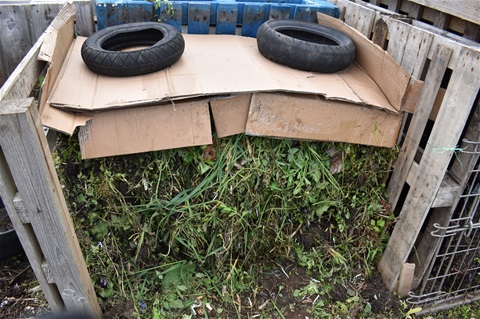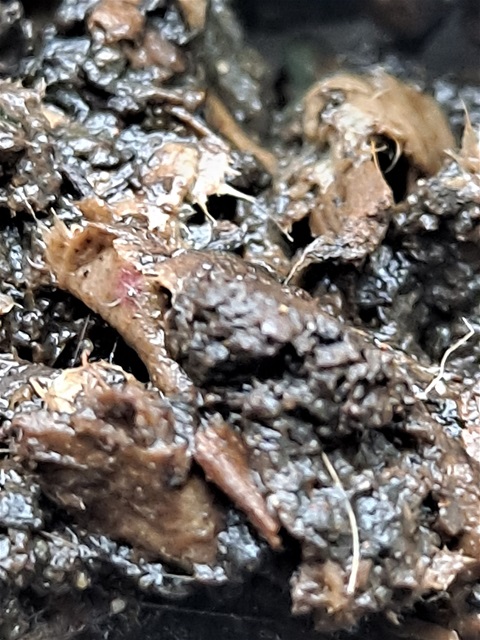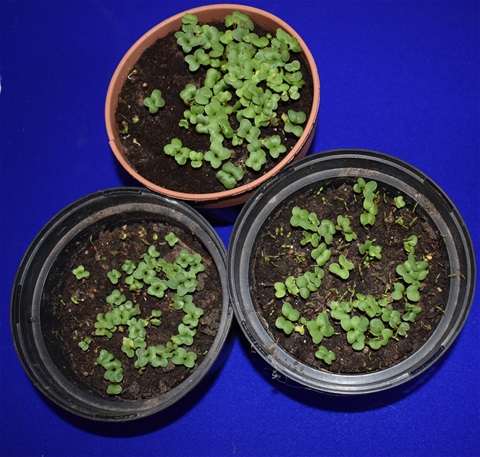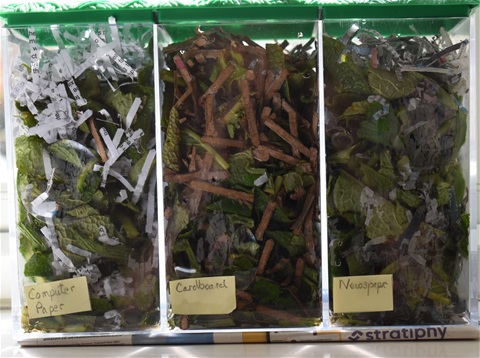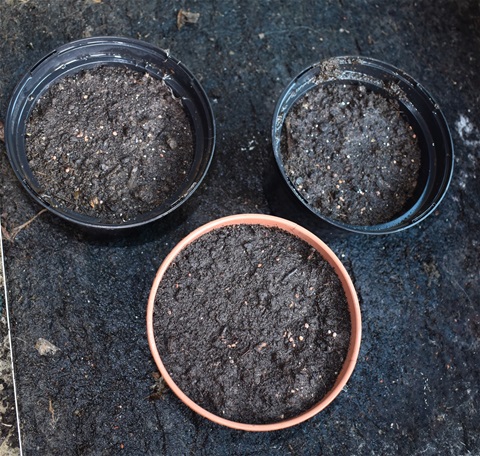Composting office paper, newspaper and cardboard
Paper is a standard source of browns but I have read that as Newspapers has a higher Lignin content than office paper and cardboard it should be avoided if possible. I have never experienced any problems in the past but to celebrate Compost Awareness Week i decided to compare how Office paper, Newspaper and cardboard composted in my triple compartment table top composter. The experiment was started on 2 May with the three samples being shredded using the same shredder. I then mixed equal amounts of each with small pieces of comfrey and added a little compost from an existing bin as a starter moistening the mix with water. Shredding the paper made it easier to distribute through the comfrey so we did not have any problems of matting as might happen if it had been left in sheets. The samples where removed from the" bins" and turned by hand to aerate them every four day. The compost was removed after 18 days and photographed.
http://www.carryoncomposting.com/416920203
Compost Radish Test No herbicide here
Following on from the post on 29th April I now have the phot of the results of the raddish test on my two most recent batches of community compost. The photo shows the two test samples in black pots and araddishes in a commercial compost in the red one. All have germinated and will be thinned and grown to maturity
Normally I would have planted ten seeds per pot but on yhis occasion I wanted more green for the photo
Comparison of composting rate for different types of paper
Home composting is the most convenient and environmentally friendly way to deal with organic waste which includes paper and cardboard a good source of carbon (Browns).
However, not all paper products are the same and some will be slower to compost as they have higher levels of lignin remaining in the product after the manufacturing process. Office/computer paper will only have about five percent lignin, cardboard 10 % but newspaper will have about 30 %. As a consequence, some suggest that newspaper is best recycled rather than composted as it takes longer to breakdown. While this may be true of rapid commercial composting system, I have not found it a problem when home composting.
As part of our Compost Week celebrations, we are hoping to generate interest in composting paper products by comparing the cold composting rate of office paper, newspaper and cardboard in our tabletop composters and will be publishing regular photos during decomposition.
The bins in the photo show day1 of the experiment. To reduce the number of variables we are using comfrey as the only green with about an equal amount of shredded paper in each bin. The bins contain computer/office paper on the left, cardboard in the centre and newspaper on the right. More photos will follow.
We ask home and community composters to compare the use of office and newspaper in their composting bins.
Compost Maturity/Germination : Compost Week suggestion
The length of time it takes to produce mature ready to use compost will vary with the method used and the type of bin from about a month to a year , and the intended use of the compost but to do so is quick and simple..
However, most composters do not test their compost, if it looks and smells OK, they use it especially if it is just being used as a mulch. Some will go a little further and carry out a smell test (as discussed in my previous blog). I have always felt that maturity tests where unnecessary on home compost but there is always a slight change that immature compost could kill or stunt plants. It is also possible that an herbicide in the raw products could survive the composting process, remember the horse manure problem. .
A simple Maturity/Germination test using used radish seeds that is quite quick and requires relatively little effort. . A known number of seeds are sown in a pot of the compost to be tested and allowed to germinate. Some methods use ten seeds per po so that the geminated and mature plants can be counted, and a germination rate calculated. If counting the seeds, I tend to use either ten or multiples of ten to make the calculation of 75% easier although but most of the time I use a 1.2ml ( ¼ tsp) measure and sow the seeds in sown in a 15cm flowerpot and just estimate whether ¾ have germinated. It is advisable to use a control sample of commercially available compost or a previous tested batch of home compost as a control. The seeds may need to be watered daily to maintain the moisture level. Radishes are used because they germinate and mature quickly. It should be possible to count the germinated seeds at about seven days and harvest after 4 weeks.
If about three quarters of the seeds germinate and grow into radishes the compost is ready and safe to use., they also make this an interesting growing activity for kids.
If more accuracy is required a more pots should be used, some will use 6ix pots with about 69 seeds for both the test and control samples If the germination rate id significantly lower in the test samples than the control the compost is still immature, and the maturation process should continued
Why not test your (compost) maturity as part of Compost Awareness Week?
